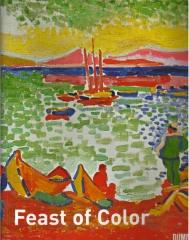Amongst the almost 200 paintings and sculptures are works by the leading exponents of all the most important European movements in 20th-century art: Impressionism (Monet, Cézanne, Renoir), post-Impressionism (van Gogh, Picasso), the Fauves (Derain, Matisse, Vlaminck, Braque), the 'Brücke' artists Heckel and Kirchner, Germans persecuted during the Third Reich such as Nolde, Barlach and Beckmann, the 'Blaue Reiter' artists Jawlensky, Kandinsky and Münter, Italian Futurists (Severini, Boccioni), Russian Constructivists (Malevich, Goncharova and others), the Cubist Léger, and the Spaniard Miró. The younger generation of painters and sculptors working between the 1950s and 90s, including Richard Paul Lohse and Sam Francis, is also notably represented by Calder, González, Tinguely, Moore and Rickey. On the surface all the works are connected by the dominance of colour over subject matter. The result is a glowing overview with which the exhibition in the Kunsthaus Zurich traces the birth and development of the most important schools and trends in modern art. The main criterion guiding the collector Werner Merzbacher in his choice of works has always been the joy they give him; he is never distracted by commercial considerations. He chooses works that move him because, as he himself says, they touch a chord in his own nature. Hence this exhibition in the Kunsthaus is all about the history of art and the story of a family

(0 Comentarios)